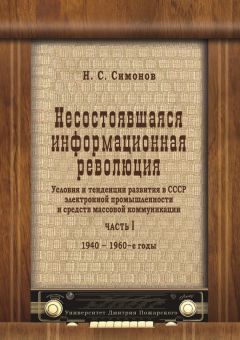Ознакомительная версия.
Торн К., Маккей Д. Тренинг. Настольная книга тренера. СПб.: Питер, 2001.
Турнер Д. Ролевые игры. Практическое руководство. СПб.: Питер, 2002.
Уайменн Дж. М., Джайлс Г. Коммуникация в межличностных и социальных отношениях // Перспективы социальной психологии. М.: Эксмо-Пресс, 2001.
Фестингер Л. Теория когнитивного диссонанса. СПб.: Ювента, 1999.
Филонов Л. Б. Психологические аспекты установления контактов между людьми: Методика контакт. взаимодействия. Пущино: НЦБИ АН СССР, 1982.
Филонович С. Р. Лидерство и практические навыки менеджера. М.: ИНФРА-М, 2000.
Фишер Р., Юри У. Путь к согласию, или переговоры без поражения. М.: Наука, 1992.
Фрейд З. Психология масс и анализ человеческого «Я» // Преступная толпа. М.: Ин-т психол. РАН; Изд-во «КСП+», 1998.
Хабермас Ю. Моральное сознание и коммуникативное действие. М.: Наука, 2000.
Хараш А. У. Личность в общении / Общение и оптимизация совместной деятельности. М.: Изд-во МГУ, 1987.
Холл С., Гарднер Л. Теории личности: Учеб. пособие для студентов фак-та психол. по дисциплине «Общая психология». М.: Апрель-Пресс; Эксмо-Пресс, 1999.
Хьелл Л., Зиглер Д. Теории личности. СПб.: Питер, 1997.
Цуканова Е. В. Психологические трудности межличностного общения. Киев: Головное изд-во изд. объед. «Вища школа», 1985.
Чалдини Р. Психология влияния. СПб.: Питер, 2000.
Чернатони Л. От видения бренда к оценке бренда. Стратегический процесс роста и усиления бренда. М.: Группа ИДТ, 2007.
Чудова Н. В. Особенности образа «Я» «жителя Интернета» // Психологический журнал. 2002. Т. 23. № 1.
Шадриков В. Д. Мысль и познание. М.: Логос, 2014.
Шибутани Т. Социальная психология. Ростов н/Д.: Феникс, 1998.
Шленская А. В. Временная организация структуры невербального взаимодействия и диалогичность общения. Дисс… канд. психол. наук. М., 1995.
Шостром Э. Анти-Карнеги, или Человек-манипулятор / предисл. Л. А. Карпенко, А. В. Петровского. М.: Моск. изд. группа, 1992.
Якокка Л. Карьера менеджера. М.: Прогресс, 1990.
Aaker J. L. Dimensions of Brand Personality // Journal of Marketing Research. 1997. Vol. 34.
Al-Khayyat R. M., Elgamal M. A. A Macro Model of Training and Development: Validation // Journal of European Industrial Training. 1997. Vol. 21. No. 3.
Altman I., Taylor D. A. Social Penetration: The Development of Interpersonal Relationship. N.Y.: Holt, Rinehart, and Winston, 1973.
Ammons R. B. Ef ects of knowledge of performance: A survey and tentative theoretical formulation // The Journal of General Psychology. 1956. Vol. 54. No. 2.
Anderson A. K., Pheips E. A. Expression without recognition // Psychological Science. 2002. Vol. 11. No. 2.
Appelbaum S H., Goransson L. Transformational and adaptive learning // The Learning Organization. 1997. Vol. 4. No. 3.
Archer R. L. The role of personality and the social situation // Self-disclosure / G. J. Chelune (ed.). San Francisco: Jossey-Bass, 1979.
Argyle M. Social Interaction. L.: Methuen, 1969.
Argyle M. The nature of social skills // Social Skills and Mental Health / M. Argyle (ed.). N.Y.: Methuen, 1981.
Argyle M., Dean J. Eye-contact, distance and af liation // Sociometry. 1972. Vol. 6. No. 1.
Arkin R. M. Self-presentation styles // Impression Management Theory and Social Psychological Research / J. T. Tedeschi (ed.). N.Y.: Academic Press, 1981.
Arthur W. J. et al. Ef ectiveness of training in organizations: A meta-analysis of design and evaluation features // Journal of Applied Psychology. 2003. Vol. 88.
Back K. W. Beyond words: The Story of Sensitivity Training and the Encounter Movement. N.Y.: Russell Sage Foundation, 1972.
Baker L. L., Fraser C. Facilitator Core Competencies as Defi ned by the International Association of Facilitator // The IAF Handbook of Group Facilitation / S. Schuman (ed.). San Francisco: Jossey-Bass, 2005. P. 459–471.
Baldmin M. The triadic concept in the work of Virginia Satir // Virginia Satir: Foundational Ideas / B. J. Brothers (ed.). N.Y.; L.: Routledge, 1991.
Baldwin T. T., Ford J. K. Transfer of training: A review and directions for future research // Personnel Psychology. 1988. Vol. 41. N o. 1.
Baron B. Geschlossene Gesellschaft. Konstanz, 1996.
Bartlem C. S., Locke E. A. The coch and French study: A critique and reinterpretation // Human Relation. 1981. Vol. 34. No. 7.
Begley S., Carey J. The sexual brain // Newsweek. 1979. November 26.
Benne K. D. History of the play group in the laboratory setting // T-Group theory and laboratory method: Innovation in re-education / L. P. Bradford, J. R. Gibb, K. D. Benne (eds). N.Y.: John Wiley, 1964.
Bennis W. G. Why Leaders Can Lead. San Francisco: Jossey-Bass, 1989.
Bennis W. G., Nanus B. Leaders: The Strategies for Taking Charge. N.Y.: Harper & Row, 1985.
Bens I. Facilitating with Ease! San Francisco: Jossey-Bass, 2005a.
Bens I. Advanced Facilitating Strategies: Tools & Techniques to Master Dif cult Situations. San Francisco: Jossey-Bass, 2005b.
Bergenhenegouwen G. J., Horn H.F.K., Mooijman E.A.M. Competence development – a challenge for HRM professionals: Core competences of organizations as guidelines for the development of employees // Journal of European Industrial Training. 1996. Vol. 20. No. 9.
Bernieri F., Rosental R. Interpersonal Coordination. Cambridge University Press, 1991.
Bion W. R. Group dynamics: A re-view // International Journal of Psycho-Analysis. 1952. Vol. XXXIII.
Bland C. Training managers to communicate ef ectively // Industrial and Commercial Training. 1998. Vol. 30. No. 4.
Blume B. D. et al. Tranfer of training: A meta-analytic review // Journal of Management. 2010. Vol. 36. No. 4.
Bowers C. A., Pharmer J. A., Salas E. When member homogeneity is needed in work team: A meta-analysis // Small Group Research. 2000. Vol. 31. No. 3.
Boyatzis R. E. The Competent Manager: A Model for Ef ective Performance. N.Y.: Wiley, 1982.
Bradford L. P. Biography of an institution // Journal of Applied Behavioral Science. 1967. No. 3.
Breakwell G. M. Coping with Threatened Identities. L.; N.Y.: Methuen, 1986.
Brickner M. A., Harkins S. G., Ostrom T. M. Ef ects of personal involvement: Thought-provoking implications for social loafi ng // Journal of Personality and Social Psychology. 1986. Vol. 51. No. 4.
Broad M. L. Beyond transfer of training: Engaging systems to improve performance. San Francisco, CA: John Wiley & Sons, 2005.
Brown K. G. Examining the structure and nomological network of training reactions: A closer look at “smile sheets” // Journal of Applied Psychology. 2005. Vol. 90.
Brown V., Paulus P. B. A simple dynamic model of social factors in group brainstorming // Small Group Research. 1996. Vol. 27. No. 1.
Bunker B. Managing confl ict through large-group methods // The handbook of confl ict resolution: Theory and practice / D. Morton, P. Coleman, E. Marcus (eds). San Francisco: Wiley Imprint, 2006. P. 757–780.
Bunker B. B., Alban B. T. Editors' introduction: The large group intervention – A New Social Innovation? // The Journal of Applied Behavioral Science. 1992a. Vol. 28. No. 4.
Bunker B. B., Alban B. T. What makes large group interventions ef ective? // The Journal of Applied Behavioral Science. 1992b. Vol. 28. No. 4.
Bunker B. B., Alban B. T. Large Group Interventions: Engaging the Whole System for Rapid Change. San Francisco: Jossey-Bass, 1997.
Burke L. A., Hutchins H. M. A study of best practices in training transfer and proposed model of transfer // Human Resource Development Quarterly. 2008. Vol. 19. No. 2.
Burke L. A., Hutchins H. M. Training transfer: An integrative literature review // Human Resource Development Review. 2007. Vol. 6. No. 3.
Bushe G. R., Marshak R. J. Revisioning organization development: Diagnostic and dialogic premises and patterns of practice // Journal of Applied Behavioral Science. 2009. Vol. 45. No. 3.
Carlson P. The Diagnosis-Intervention Cycle // The Skilled Facilitator Fieldbook / R. Schwarz, A. Davidson, P. Carlson, S. Mckinney (eds). San Francisco: Jossey-Bass, 2005a.
Carlson P. Basic facilitation. What Can Be Accomplished? What Cannot? // The Skilled Facilitator Fieldbook / R. Schwarz, A. Davidson, P. Carlson, S. McKinney (eds). San Francisco: Jossey-Bass, 2005b.
Cavell T. A. Social adjustment, social performance and social skills: A three-component model of social competence // Journal of Clinical Child Psychology. 1990. Vol. 19. No. 2.
Challenger J. A. 24 trends reshaping the workplace // The Futurist. 2000. Sept/Oct.
Cheetham G., Chivers G. The refl ective (and competent) practitioner: A model of professional competence, which seeks to harmonize the refl ective practitioner and competence-based approaches // Journal of European Industrial Training. 1998. Vol. 2. No. 7.
Cheetham G., Chivers G. Towards a holistic model of professional competence // Journal of European Industrial Training. 1996. Vol. 20. No. 5.
Colema, J. The Tavistock Institute for Human Relations: Shaping the Moral, Spiritual, Cultural, Political and Economic Decline of the United States. Joseph Holding Corporation, Incorporated, 2005.
Collins D. B., Holton E. F. The ef ectiveness of managerial leadership development programs: A metaanalysis of studies from 1982 to 2001 // Human Resource Development Quarterly. 2004. Vol. 15. No. 2.
Colquitt J. A., LePine J. A., Noe R. A. Toward an integrative theory of training motivation: A meta-analytic path analysis of 20 years of research // Journal of Applied Psychology. 2000. Vol. 85.
Condon W., Ogston W. A segmentation of behavior // Journal of Psychiatric. 1968. Vol. 5. No. 2.
Cooley C. H. Human Nature and the Social Order. N.Y.: Schocken, 1964.
Cooperrider D. L., Whitney D., Stavros J. M. Appreciative Inquiry Handbook. Brunswick: Crown Custom Publishing, Inc., 2008.
Creswell J. W. Research design. Thousand Oaks, CA: Sage, 2003.
Cummings T. G., Worley C. G. Organization Development and Change. South-Western Cengage learning, 2009.
Dabbs J. Similarity of gesture and interpersonal infl uence // Journal of American Psychological Assoc. 1969. Vol. 4.
Dahrendorf R. The Modern Social Confl ict. Berkeley: University of California Press, 1988.
Davidson A. Process Designs // The Skilled Facilitator Fieldbook / R. Schwarz, A. Davidson, P. Carlson, S. Mckinney (eds), San Francisco: Jossey-Bass, 2005a.
Davidson A. Thinking and Acting Systemically // The Skilled Facilitator Fieldbook / R. Schwarz, A. Davidson, P. Carlson, S. Mckinney (eds). San Francisco: Jossey-Bass, 2005b.
Davidson A. Using the Group Ef ectiveness Model // The Skilled Facilitator Fieldbook / R. Schwarz, A. Davidson, P. Carlson, S. Mckinney (eds). San Francisco: Jossey-Bass, 2005c.
Davidson A. Developing Shared Vision and Values // The Skilled Facilitator Fieldbook / R. Schwarz, A. Davidson, P. Carlson, S. Mckinney (eds). San Francisco: Jossey-Bass, 2005d.
Davidson A. Helping Groups Clarify Roles and Expectations // The Skilled Facilitator Fieldbook / R. Schwarz, A. Davidson, P. Carlson, S. McKinney (eds). San Francisco: Jossey-Bass, 2005e.
Davis M. Intimate Relations. N.Y.: Free Press, 1973.
Deaux K. Sex and gender // Annual Review of Psychology. 1985. Vol. 36.
Delise L. A., Gorman A., Brooks A. M. The ef ects of team training on team outcomes: A metaanalysis // Performance Improvement Quarterly. 2010. Vol. 22. No. 4.
DeNisi A. S., Kluger A. N. Feedback ef ectiveness: Can 360-degree appraisals be improved? // Academy of Management Executive. 2000. Vol. 14. No. 1.
Denmark L. Styles of leadership // Psychology of Women Quartery. 1977. Vol. 2.
Derlega V. J., Chaikin A. L. Sharing Intimacy: What We Reveal to Others and Why. Englewood Clif s, NJ: Prentice-Hall. 1975.
Ознакомительная версия.





